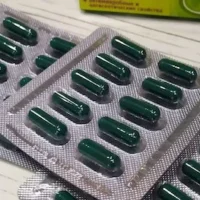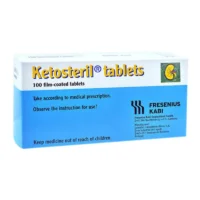Description
Nitroxolin (Nitroxolinum) Coated Tablets 0.05 g №50
Ingredients:
Each coated tablet contains 0.05 g of Nitroxolinum as the active ingredient. Other ingredients include lactose monohydrate, corn starch, povidone, talc, colloidal silicon dioxide, and magnesium stearate.
Dosage:
The usual dosage for adults is 0.1-0.2 g 4 times a day. The tablets should be taken orally with plenty of water after meals.
Indications:
- Nitroxolin tablets are indicated for the treatment of urinary tract infections caused by susceptible bacteria.
Contraindications:
- Do not use Nitroxolin if you are allergic to nitroxoline or any other ingredients in the tablets.
- It is contraindicated in patients with severe hepatic impairment or renal failure.
Directions:
Follow the instructions provided by your healthcare provider. Take the tablets as prescribed and complete the full course of treatment even if symptoms improve.
Scientific Evidence:
Nitroxolin has demonstrated efficacy in the treatment of urinary tract infections in various clinical studies. Research published in the International Journal of Antimicrobial Agents highlighted the effectiveness of nitroxoline in combating multidrug-resistant bacteria commonly associated with UTIs.
Additional Information:
Nitroxolin works by inhibiting the synthesis of bacterial DNA, thereby preventing the growth and spread of infection. Compared to other antibiotics, Nitroxolin has shown comparable efficacy with a lower risk of developing bacterial resistance, making it a valuable option in the management of UTIs.





